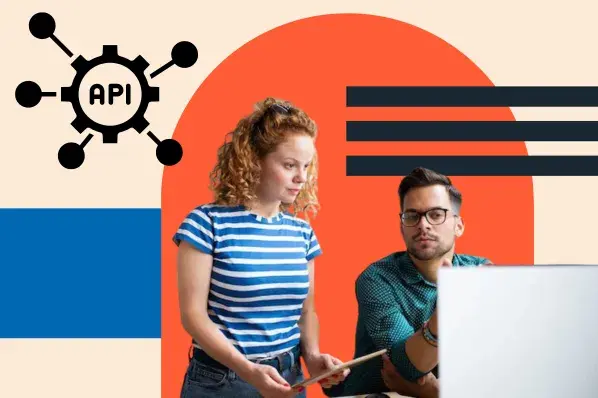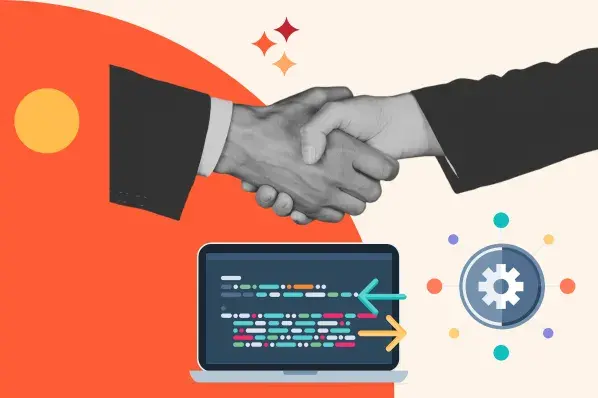- What is the Facebook API?
- How to Get Started with the Facebook API
- Different Ways You Can Use The Facebook Graph API
What is the Facebook API?
The Facebook Graph API is an HTTP-based API that allows developers to extract data and functionality from the Facebook platform. Applications can use this API to programmatically query data, post in pages and groups, and manage ads, among other tasks.
The other Facebook APIs are extensions of the Graph API. Let’s briefly describe them below. The current version of the Facebook API is v15.0 which was released on September 15, 2022.
Conversions API
The Conversions API allows apps to track web conversions, post-conversion events, and page visits as well as data required for ad targeting, ad reporting, audience insights, and dynamic ads. This information can help improve the performance and measurement of your Facebook ad campaigns.
Live Video API
The Live Video API enables apps to stream live video directly to Facebook user profiles, pages, and groups. With this API, your app can broadcast a live video stream, schedule broadcasts, interact with audiences during broadcasts, and create polls on broadcasts.
Instagram APIs
Instagram APIs allow your app users to publish media, moderate comments, discover @mentions, share their content as Instagram stories, get and manage published photos, videos, and stories, and more.
For more examples of how to use Instagram APIs, check out 11 Ways to Use Instagram’s API for Your Business [Examples].
Marketing API
The Marketing API enables businesses to better advertise on Facebook by automating ad management and creation, offering custom dashboards for insights and performance, and more.
Pages API
The Pages API allows apps to create and manage a Page’s settings and content. Using this API, an app can create and get Posts, get Comments on Page-owned content, get Page insights, update actions that Users are able to perform on a Page, and more.
Video API
The Video API allows apps to publish videos on Facebook Pages and Groups, cross post (ie. publish a video on multiple Pages without uploading the video to each Page), and get insights on those videos.
WhatsApp Business API
The WhatsApp Business API is designed to enable medium and large businesses to communicate with their customers at scale. Businesses can use this API to connect thousands of agents and bots to customers via WhatsApp programmatically and manually.
Now that we understand the variety of APIs that Facebook offers and what they do, let’s go over how to use them. The process of getting started with a Facebook API will depend on which API you’re using. Below we’ll outline the process for the Facebook Graph API.
How to Get Started with the Facebook API
To get started with the Facebook Graph API, you will need:
- A Facebook Developer account
- A Facebook App (with some basic information about your app provided in the App Dashboard)
If you already have these, it’s time to make your first request.
Step 1: Open the Graph Explorer tool in a new window.
First, open the Graph Explorer tool in a separate browser window.
In this new window, you’ll notice the explorer loads automatically with some information. From left to right, there’s a default query with the GET method, the latest version of the Graph API, and the /me node followed by the id and name fields. This information is circled in the screenshot below.

Step 2. Generate an access token.
Next, click the Generate Access Token button on the right hand side of the screen. A window will pop up prompting you to log in to Facebook. By logging in, you will be granting your app permission to get your name and profile picture from Facebook.

Click Continue as [username].
A User Access Token is created. This token contains information such as the app making the request, the person using the app to make a request, if the access token is still valid (it expires in about an hour), the expiration time, and the scope of data the app can request. In this request, the scope is public_profile which includes your name and profile picture.
To view this information, click the information circle icon next to the access token.

Step 3. Submit the request.
Click the Submit button in the upper right corner. You will see a JSON response with your Facebook User ID and name in the Response Window.

You can make subsequent requests more complicated by adding fields (like the email field) and any required permissions (like the email user data permission). By doing so, you will change the scope of the access token and need to create a new one.
To generate a new access token, follow the same steps above: click Generate Access Token, give your app permission to access your email by logging in to Facebook, and click Submit.
Different Ways You Can Use The Facebook Graph API
Now that you know how to access the Facebook Graph API, there's a lot you can do with it. Below are several ways to use the Graph API and its extensions.
1. Get page insights.
The Facebook Graph API is all about getting data into and out of Facebook. With this API, you can query data and create powerful dashboards to understand your content and audience better. For example, you can extract information from your own Page that shows who wrote each post and how many people liked it. Then, you can figure out what writers get the most likes.
2. Get audience insights.
You can also use the Facebook API to understand your audience better. For example, you can collect basic demographics on your visitors, which will ultimately help you provide a better product. That’s why Spotify and Amazon use the API.
3. Manage ads.
You can use the Facebook API to manage ads as well. For example, you can retrieve the creative content or ads of an ad account in a single request. You can also read and pull ads reports for ad accounts you own or have been granted access to by the account owner.
4. Provide customer support.
You want to respond to a customer’s message even if your business is closed for the weekend or you haven’t had time to resolve their issue yet. The Facebook API allows your app to have a human agent respond to user messages in cases where their issue cannot be resolved in the standard messaging window.
5. Post live videos.
The Facebook API allows users to post live videos to Pages, Groups, and User timelines from your app.
6. Embed Facebook and Instagram feeds.
You can use the Facebook API to embed public Facebook and Instagram pages, posts, and videos into your application. For example, you might display your Instagram feed on your blog, or embed a positive Facebook review from a customer on your ecommerce site.
7. Access and post content in Facebook Groups.
The Facebook API allows your app — and your app users — to access and manage content in their Facebook Group. With this API, you can let people publish content from your app to their Group. You can also help them get information about content posted to their Group, as well as get aggregated insights about activity happening in their Group.
8. Access content on Instagram.
The Facebook API allows your app to access Instagram Graph API's Hashtag Search endpoints. This, in turn, enables your app to discover photos and videos using your hashtags, understand public sentiment around your brand, and identify contest, competition, and sweepstakes entrants.
9. Gather competitive benchmark analysis.
With the Facebook API, you can access and read public data for Facebook Pages that you are not the admin of. This data, including business metadata, public comments, and posts, can be used for competitive analysis and benchmarking.
Ready to Use the Facebook API?
The Facebook Graph API provides you access to the social media platform that everyday users can’t get. As a business owner or marketer, there are many ways to use this API to enhance the functionality of your website or product, reach a wider audience, and grow your business. This guide can help you maximize your efforts and grow your brand at scale.




![How to get a YouTube API key [tutorial + examples]](https://53.fs1.hubspotusercontent-na1.net/hubfs/53/%5BUse%20(1)-4.webp)
.webp)






